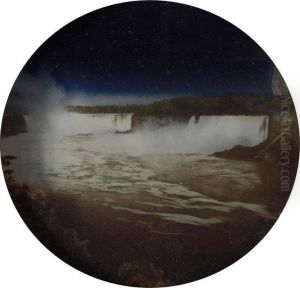William Langenheim Paintings
William Langenheim was a pioneering figure in the early history of photography in the United States. Born in Schöningen, Germany, in 1807, he immigrated to America with his brother Frederick in the 1830s. Initially settling in Philadelphia, they established themselves as print and map dealers. It wasn't long before the brothers were captivated by the emerging technology of photography, which would become their enduring legacy.
The Langenheim brothers are best remembered for their introduction of the daguerreotype process in America. After Louis Daguerre unveiled this process in France in 1839, it revolutionized the way images were captured and shared. The Langenheims acquired a license to use this process from Daguerre and became one of the first to offer portraits to the American public. Notably, they also experimented with new photographic techniques and materials, including the use of glass negatives.
In the 1850s, William Langenheim, along with his brother, made significant advancements by developing the hyalotype, a form of glass negative that allowed for the production of photographic lantern slides. They were awarded a medal for their hyalotypes at the Crystal Palace Exhibition in New York in 1853. These slides could be projected onto a surface, thus allowing for the mass viewing of images, akin to the modern-day slide projector.
William's contributions to photography extended beyond these innovations. He was involved in the early documentation of American history through his work. The Langenheim brothers captured important events and figures, including producing one of the earliest known photographs of a solar eclipse in 1854. Their work is also notable for the breadth of subject matter, ranging from portraits to landscapes, and for their contribution to the popularization of photography as a medium for capturing the world.
William Langenheim's influence on photography continued throughout his life until his death in 1874. The legacy of the Langenheim brothers is evident in the way their work helped to shape the visual culture of the 19th century, contributing to the evolution of photography from a scientific curiosity to a widely practiced art and documentary form. Today, their photographs and innovations remain a testament to their ingenuity and vision in the early years of American photography.
